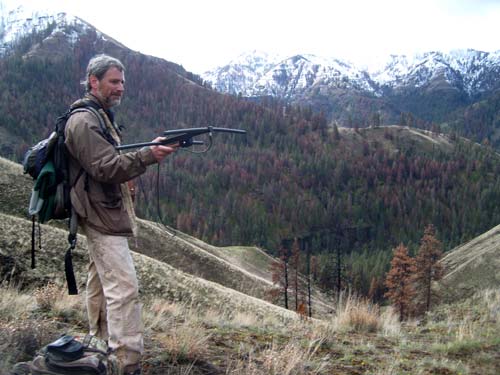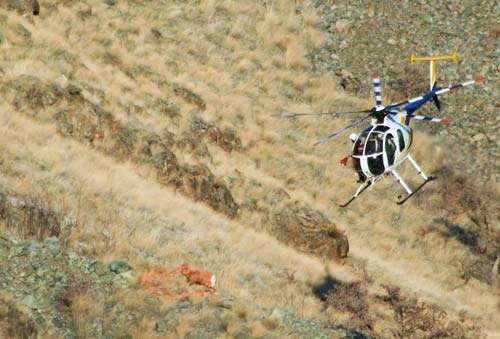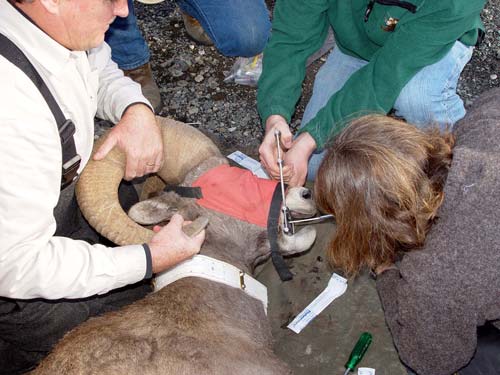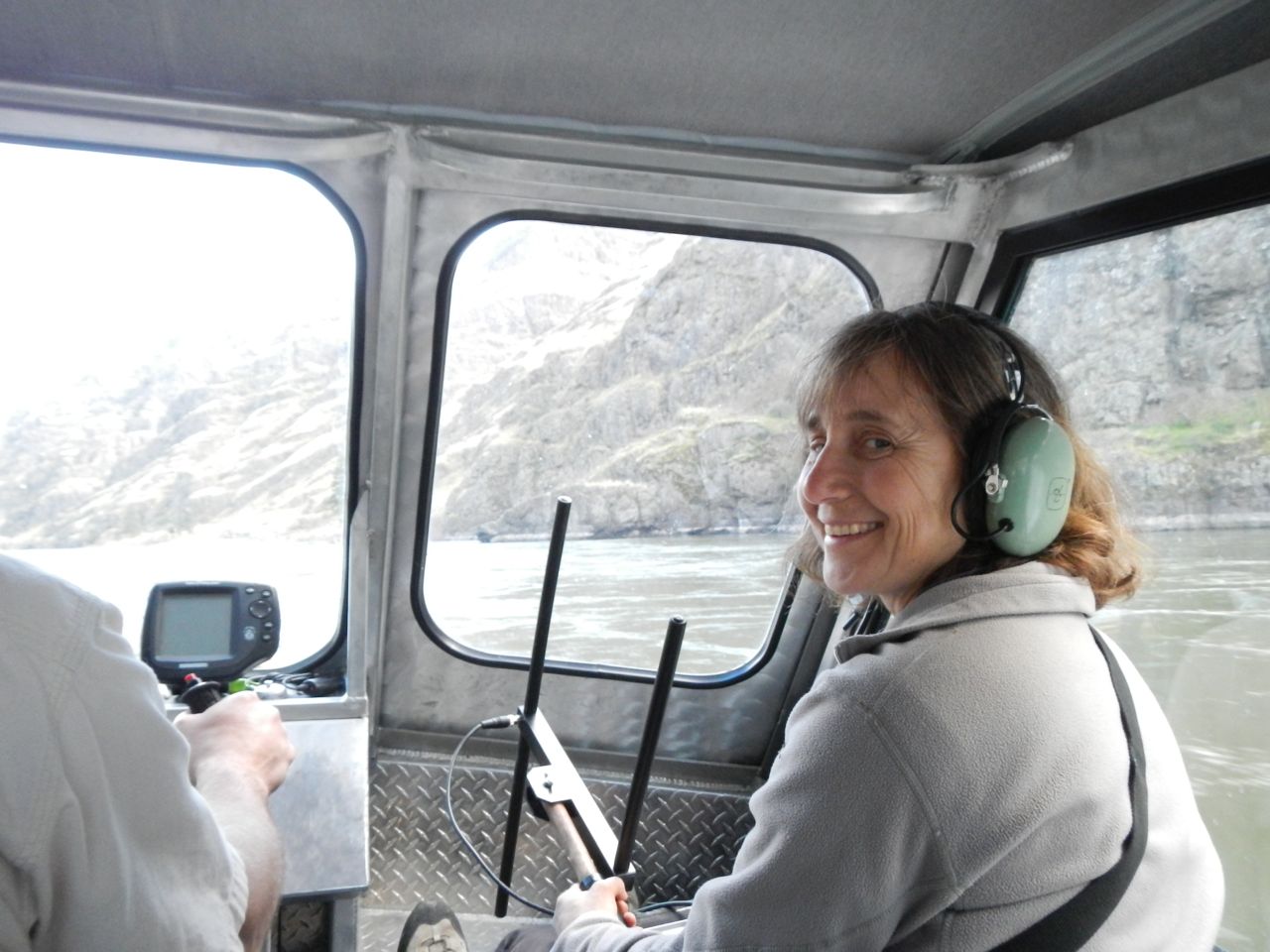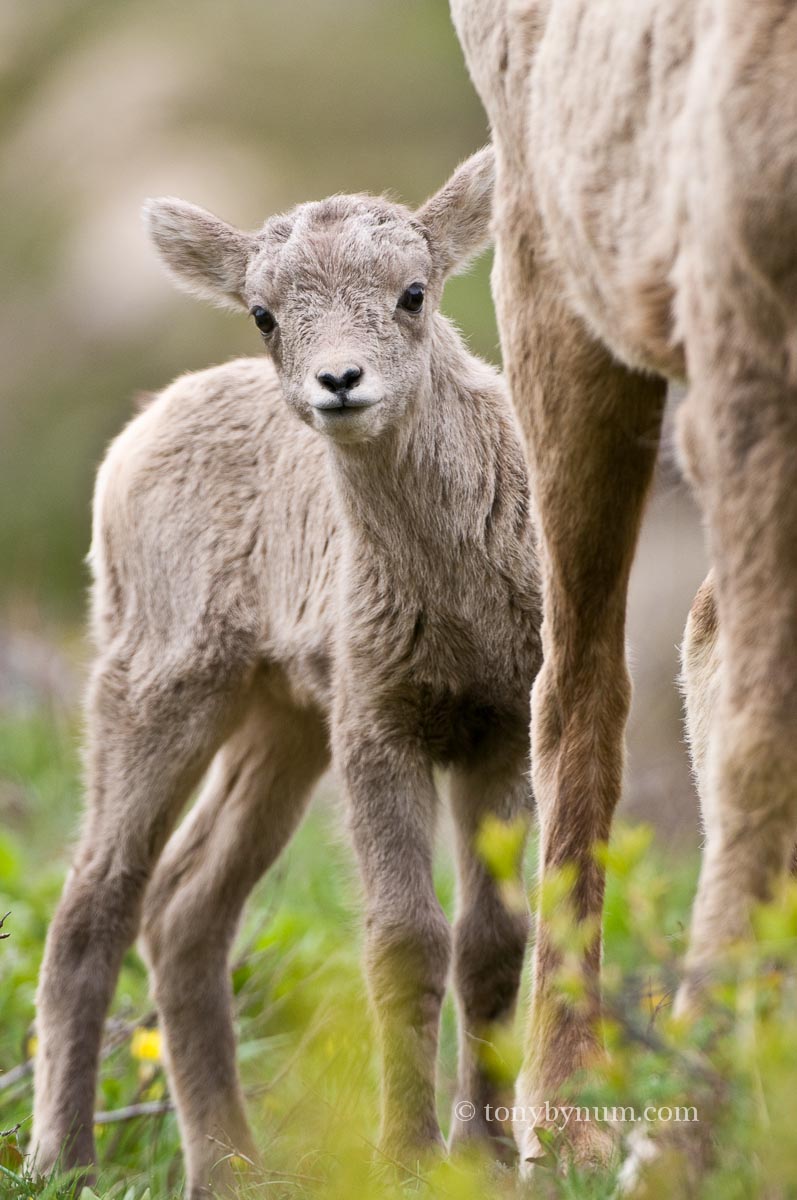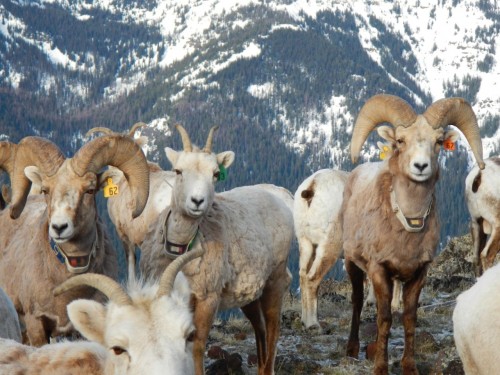The Hells Canyon Initiative
HCI: A Long-Term Collaboration
In 1997, state fish and wildlife departments and federal agencies responsible for wildlife and land management in Hells Canyon, joined forces with the Wild Sheep Foundation to create the Hells Canyon Initiative (HCI). The HCI's goal is to accelerate restoration of bighorn sheep in Hells Canyon and the surrounding area. The HCI continues to work together and spends about $250,000 annually on bighorn sheep field research and management. About 75% of the funding comes from sales of special tags to hunt bighorn rams. Check out our latest annual report here.
Field-Data Collection: High Tech and Low Tech
We use several techniques to gather data on bighorn sheep in Hells Canyon. On the high-tech end, we rely on location data from bighorn sheep outfitted with GPS collars that collect location information twenty-four hours a day. Some of these collars transmit their data to a satellite which then sends out an email or uploads it to a web site. Other collars store the location data and we can download it when the collar falls off the animal at a preprogrammed interval. We also use a helicopter to survey most of the bighorn sheep herds in Hells Canyon once a year. We collect information about sizes of herds and the composition of the population — how many ewes, rams, and lambs there are, and we estimate how old the rams are based on horn size. These data help us establish whether populations are growing or declining, including what proportion of lambs are surviving to adulthood.
More low-tech techniques include scanning for sheep with binoculars and a spotting scope, and tracking sheep that wear radio-collars transmitting a signal which can be picked up manually with a receiver. About twenty-five percent of the adult bighorn sheep in our study area are radio-collared at any one time, most with tracking collars. Biologists listen for these signals from the ground or from planes, find and map the sheep’s location and record the number, composition and, where possible, health status of animals.
Anytime we handle an animal, to put a radio collar on, for instance, we conduct a health checkup. This includes taking a swab from inside their noses and throat and blood and DNA samples.
Mortality Investigations
If a radio collar sends out a signal that the animal has stopped moving (a mortality signal) we go look for that animal. We also occasionally find uncollared dead bighorn sheep while we are out in the field. In either case, we conduct a full investigation to try to determine why the animal died. We look for evidence that a bighorn may have been killed by a predator, such as a mountain lion, or that it has fallen from a cliff, or died of pneumonia or other causes. When we find a carcass, where possible, we either collect tissue samples or remove the entire animal to send to the Washington Animal Disease and Diagnostic Laboratory for analyses. These data are crucial to bighorn research, because without reliable information about causes of death, it would be impossible to make progress understanding how and why pneumonia is taking such a high toll on bighorn sheep.


